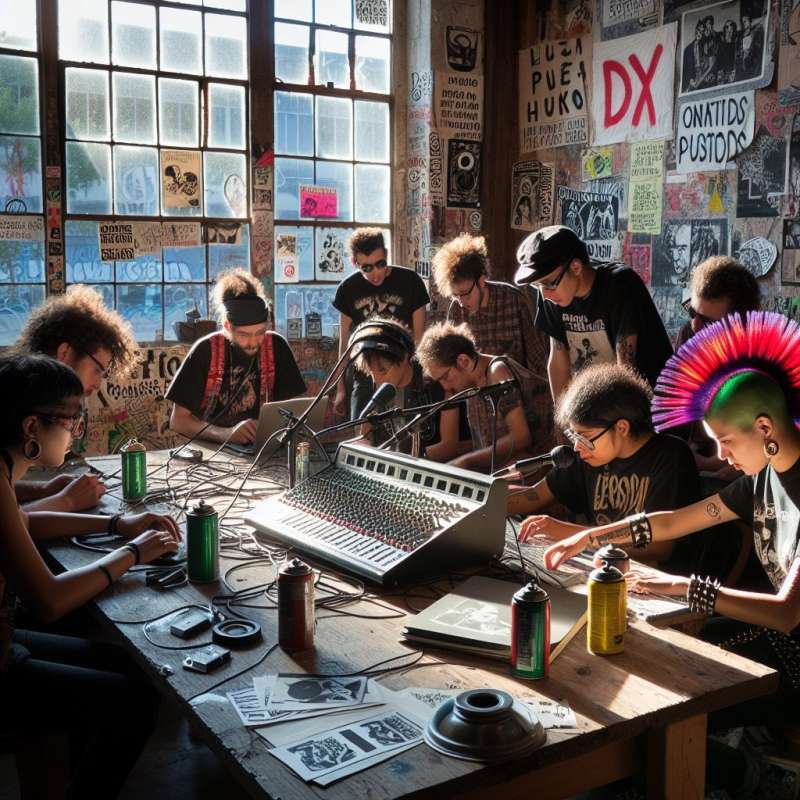
Anarcho-Punk Origins
Anarcho-punk emerged in the late 1970s, combining punk music's raw energy with anarchist political views. Notable bands like Crass and Subhumans led this subculture, advocating for direct action and DIY ethics through their music and lifestyle.
Musical Characteristics
Musically, anarcho-punk is marked by its intense pace, confrontational sound, and amateurish musicianship, reflecting its DIY ethos. Lyrics focus on anti-establishment themes, promoting peace, freedom, and equality, often delivered with a raw, unpolished vocal style.
Visual Aesthetic
The anarcho-punk aesthetic includes militaristic clothing, band patches, and black clothing, symbolizing solidarity and resistance. Band logos often feature the circled 'A' for anarchy, and artwork typically addresses political issues.
DIY Ethos
Do-It-Yourself (DIY) culture is central to anarcho-punk, rejecting mainstream and capitalist practices. Bands self-produce music and zines, organize gigs independently, and often support squats and community spaces.
Direct Action
Anarcho-punks engage in direct action for social and political change. This includes protests, graffiti, and guerilla theater, aiming to disrupt the status quo and challenge authority, often drawing attention from law enforcement.
Legacy and Influence
Anarcho-punk's influence is seen in later movements like riot grrrl and cyberpunk. Its ethos has inspired various forms of activism and cooperative living, impacting not just music, but broader social and political spheres.
Modern Anarcho-Punk
Today's anarcho-punk scene remains underground but vibrant, with new bands and activists embracing its principles. While less visible in the mainstream, its impact on punk and political discourse continues to resonate globally.
When did anarcho-punk first emerge?
Early 1980s
Late 1970s
Mid 1990s
Company